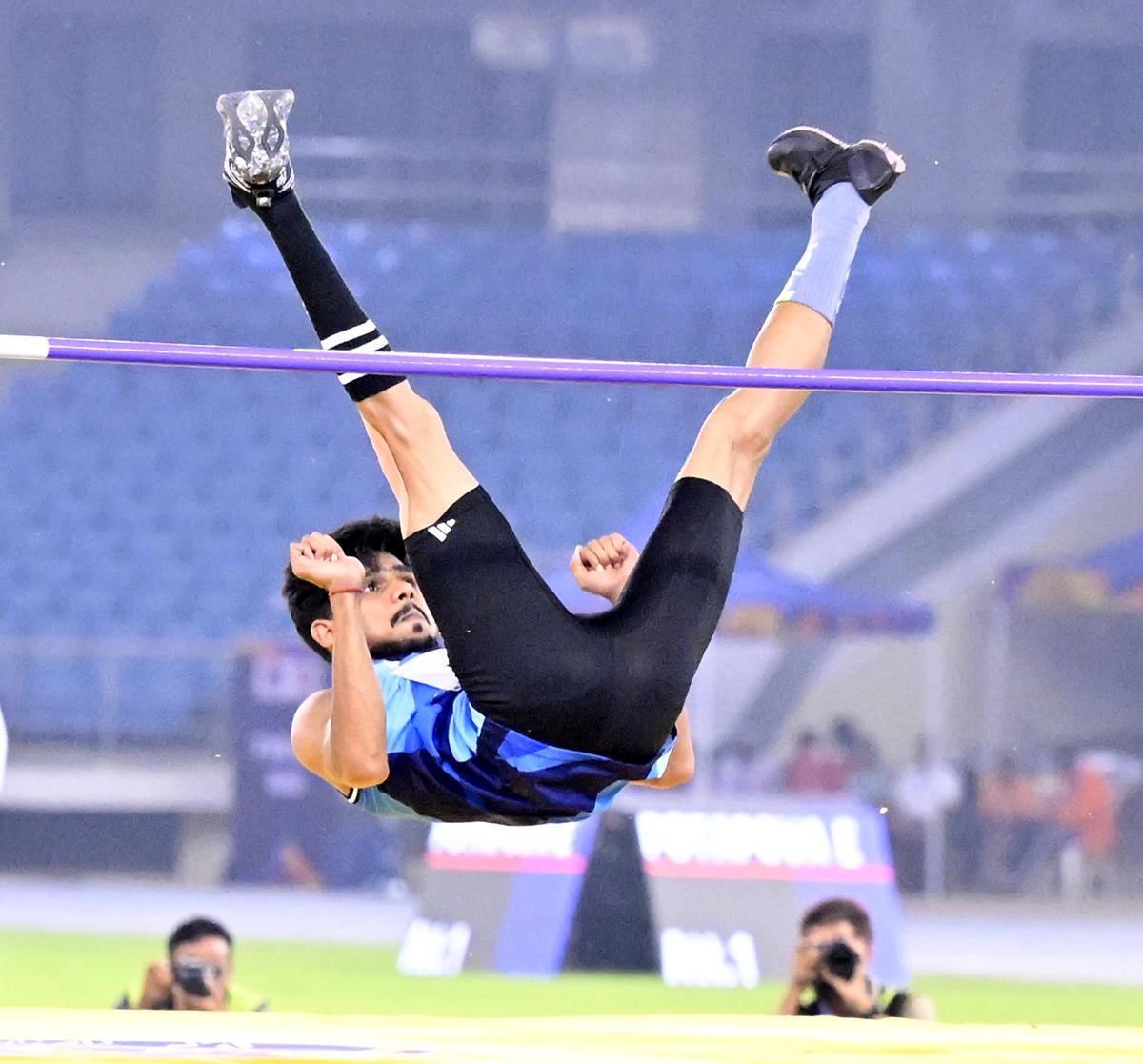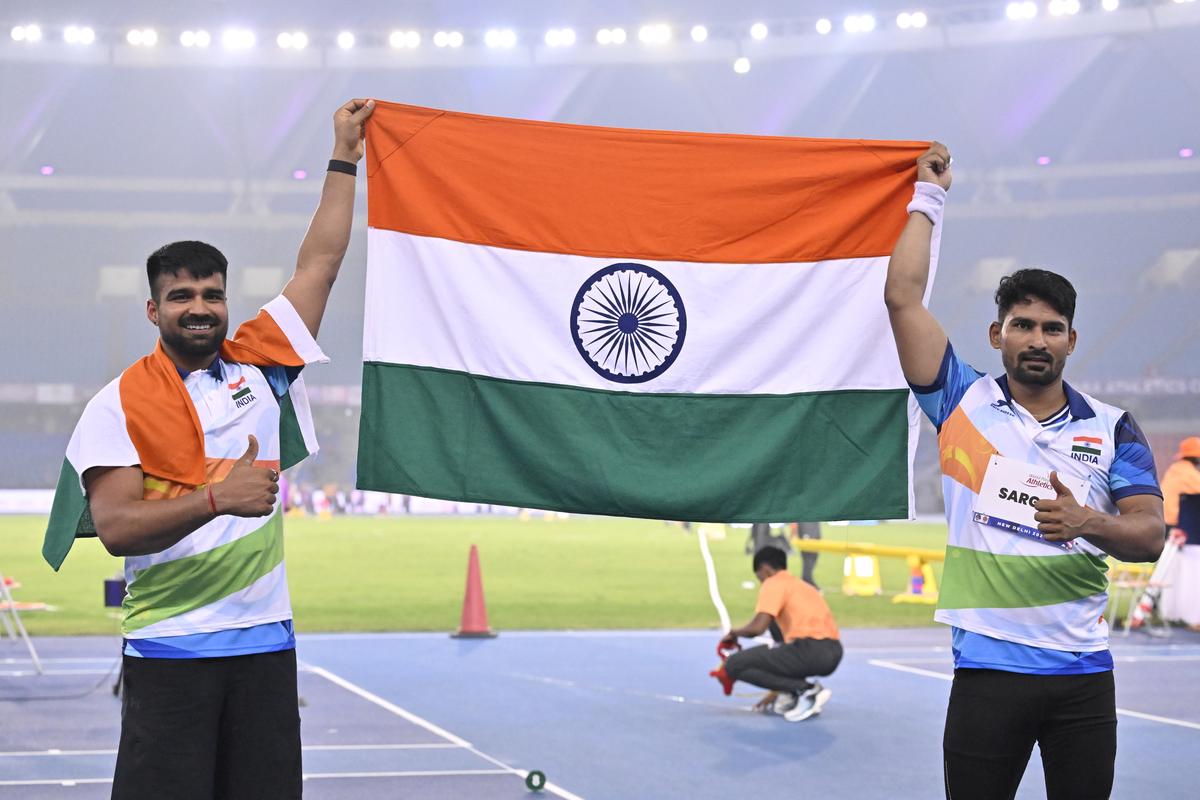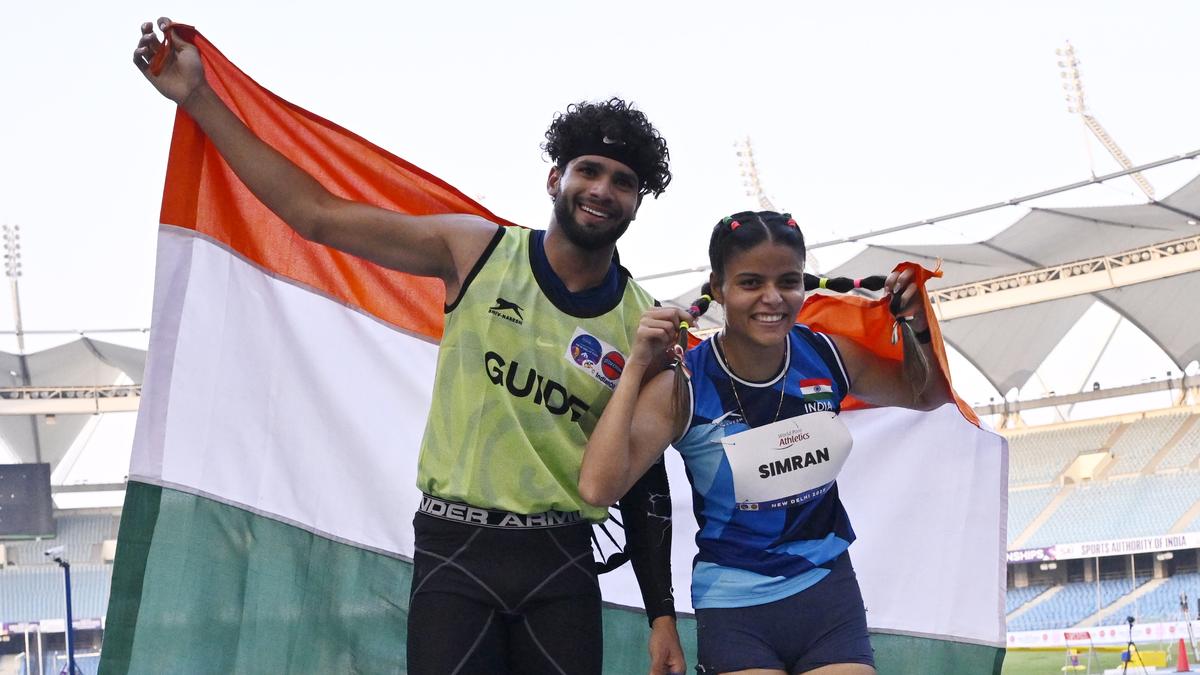A roar at home: How India’s para athletes turned New Delhi into a theatre of triumph
Coming into the 2025 Para Athletics World Championships in New Delhi, Simran Sharma was already a World champion — she had won gold in the T12 category (for partially sighted athletes) of the women’s 200m at the 2024 Worlds in Kobe. Yet when she walked into the mixed zone at the Jawaharlal Nehru Stadium a few minutes after her latest victory, her smile revealed just how much this particular triumph meant to her.
“It’s one thing to be a World champion. But it feels completely different when you win a gold medal at home and hear your national anthem being played in your own country. I’m getting goosebumps just talking about it,” Simran told reporters after her 100m final on October 3.
India’s national anthem was played a record-equalling six times at the Nehru Stadium, matching the tally at the 2024 World Championships in Kobe. However, India exceeded Kobe’s total medal count: the 73-member contingent won 22 medals — six gold, nine silver, and seven bronze — finishing 10th in the medal standings.
This was an improvement from the previous edition in 2024, when India won 17 medals (six gold, five silver, and six bronze). By comparison, India had secured nine medals in Dubai in 2019 and 10 in Paris in 2023, indicating a clear upward trend. But maintaining the same number of gold medals as in Kobe is particularly impressive, given the stronger field in a non-Paralympic year.
But there was more to the Indian performance than just the medals won.
As Simran and her guide stormed to the finish line in the women’s 100m, they clocked 11.95 seconds — a Personal Best and the first time she had ever run under 12 seconds. “All my life I’ve been chasing this time. I was finally able to get it at my home World Championships,” said Simran, who also set an Asian record of 24.46s en route to a silver medal in the women’s 200m T12.
Some credit for the quick time should go to the advanced Mondotrack surface installed at the JLN Stadium at a cost of around ₹25 crore, which included the warm-up track. However, the track alone cannot explain India’s exceptional performance. Indian athletes set three Championship records and seven Asian records, with around 30 Personal Bests across the competition.

Redemption, at last: Shailesh Kumar won gold in the men’s high jump T63 event. For India, it was the first of its six gold medals, while for Shailesh, it provided redemption after a heart-breaking fourth-place finish at Paris Paralympics.
| Photo Credit:
SHIV KUMAR PUSHPAKAR
Redemption, at last: Shailesh Kumar won gold in the men’s high jump T63 event. For India, it was the first of its six gold medals, while for Shailesh, it provided redemption after a heart-breaking fourth-place finish at Paris Paralympics.
| Photo Credit:
SHIV KUMAR PUSHPAKAR
There was consistency to go alongside improvements too. Athletes who had medalled at last year’s World Championships and Paralympic Games continued to perform at that high level.
Even when not at his best — having suffered a shoulder injury just before the start of the Championships and aggravating it during warm-up — two-time Paralympic champion Sumit Antil won his third consecutive World Championships gold in the F64 category (for athletes with a leg prosthesis) of the men’s javelin throw. Given the difference in pedigree between him and his nearest rival, Sumit still set a new Championship record of 71.37m, surpassing his own mark.
Preeti Pal, who had won two bronze medals at the 2024 Worlds in the women’s 100m T35 and 200m T35 (for athletes with cerebral palsy or other coordination impairments), improved to silver and bronze in the same events. Nishad Kumar (men’s high jump T47, for athletes who are amputees) upgraded his Paralympic silver to gold, defeating five-time champion Roderick Townsend Roberts while narrowly missing a new World record.
Defending World champions Deepthi Jeevanji (women’s 400m T20, for athletes with an intellectual impairment) and Ekta Bhyan (women’s club throw F51, for athletes with spinal injuries) also remained on the podium, winning silver in their respective events, as did Paralympic champions Dharambir (men’s club throw F51) and Navdeep Singh (men’s javelin throw F41, for short-statured athletes), who claimed silver in New Delhi.
It was not only established names who shone. Several fresh faces emerged as India’s rising para athletes. One of the most surprising was Shailesh Kumar, who won India’s first gold medal, stunning Paralympic champion and heavy favourite Ezra Frech in the men’s high jump T63 (for athletes who are amputees) on the opening day.
While Antil and Navdeep were expected to do well in javelin, Sandip Sanjay Sargar — who had never won a medal at the world level — stormed to gold in the F44 category (for athletes with moderate lower-leg impairment) with a Personal Best of 62.82m.
Javelin proved to be an event where Indian athletes had an outsized impact: apart from Sumit and Sandip, Rinku Hooda won gold in the F46 class (upper limb deficiencies), securing three of India’s six gold medals in the competition.
And when Paris Paralympic bronze medallist Hokato Sema fell short of the podium in the F57 category of the men’s shot put, India found an able replacement in Soman Rana who took bronze in the same event in New Delhi.
Too good: Switzerland’s Catherine Debrunner swept all five golds in the T53 category.
| Photo Credit:
REUTERS
Too good: Switzerland’s Catherine Debrunner swept all five golds in the T53 category.
| Photo Credit:
REUTERS
It was not only Indian athletes who impressed. Across 186 medal events over nine days, 35 World Records were broken, and 104 Championships Records were set. While this trend reflects the long-term improvements in participation, coaching, and technology in para sport, it has occurred without any reduction in the spread of medal-winning countries. Of the 100 countries competing in New Delhi, 45 won at least one gold medal, and 64 secured at least one podium finish.

Double bonanza: Sandip Sanjay Sargar (right) clinched gold and Sandeep clinched silver in the men’s javelin throw F44 event.
| Photo Credit:
SHIV KUMAR PUSHPAKAR
Double bonanza: Sandip Sanjay Sargar (right) clinched gold and Sandeep clinched silver in the men’s javelin throw F44 event.
| Photo Credit:
SHIV KUMAR PUSHPAKAR
Some of the sport’s greats showed why they earned their reputation. Markus Rehm won his eighth individual gold at the Para Athletics World Championships, setting a Championships record of 8.43m in the men’s long jump T64.
Switzerland’s Catherine Debrunner swept all five golds in the T53 category (for athletes with spinal cord injury who have the use of their arms but limited trunk mobility).
While the performances at the Games themselves lived up to expectations, there were blemishes off the field of play.
While India proved it could organise a world-level event, headlines in the final days highlighted issues such as stray dog bites and empty stadiums.
Great Britain’s Hannah Cockroft, who won three gold medals in the women’s T34, told reporters, “It was hard to believe” that the Indian public was behind the Games.
These are, of course, issues beyond the athletes’ control. At the 2025 World Championships, they focused on what they could achieve.
“These Games have given us a lot of hope. They’ve shown what we are capable of. We will do even more in the years to come,” Simran said after her events.
Published on Oct 08, 2025



